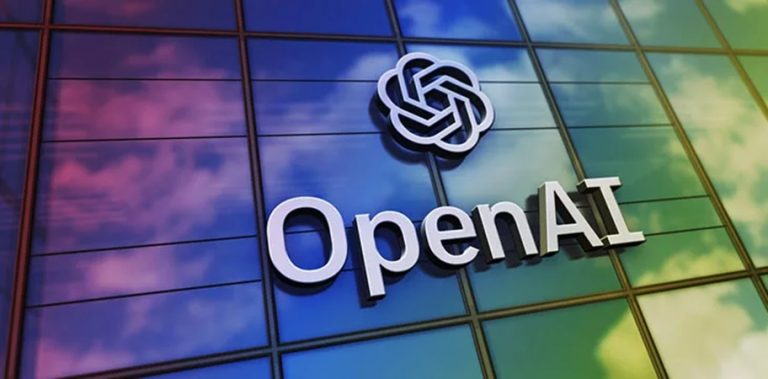
OpenAI CEO and founder Sam Altman, has reacted to the DeepSeek frenzy, that has stirred the tech world, describing the model as impressive.
Altman noted that the Chinese AI startup has a great model, particularly around what they are able to deliver for the price.
In a post made on X, he wrote,
Register for Tekedia Mini-MBA edition 19 (Feb 9 – May 2, 2026): big discounts for early bird.
Tekedia AI in Business Masterclass opens registrations.
Join Tekedia Capital Syndicate and co-invest in great global startups.
Register for Tekedia AI Lab: From Technical Design to Deployment (next edition begins Jan 24 2026).
“Deepseek’s r1 is an impressive model, particularly around what they’re able to deliver for the price. We will obviously deliver much better models and also it’s legit invigorating to have a new competitor! We will pull up some releases.
“But mostly we are excited to continue to execute on our research roadmap and believe more compute is more important now than ever before to succeed at our mission. The world is going to want to use a LOT of AI, and really be quite amazed by the next-gen models coming. Look forward to bringing you all AGI and beyond”.
Altman’s response suggests that the emergence of DeepSeek and its R1 model has served as a catalyst for OpenAl to accelerate its development efforts and solidify its position as a leading force in the global Al landscape.
His reaction to the DeepSeek model is coming after the Chinese tech startup stirred the tech world with its groundbreaking AI features, producing similar results as ChatGPT. The company has become a hot topic after it shot to fame with its V3 large language model (LLM) that outperformed many popular US tech giants while being developed at a much lower cost ( $6 million).
DeepSeek’s LLMs are built at much lower costs and processing power than its Western rivals, challenging the prevailing belief that running AI models requires ever-increasing amounts of computing power. In a paper last month, DeepSeek researchers said the V3 model used older Nvidia H800 chips for training and cost a paltry sum, compared to the billions that AI Giants like Microsoft, Meta and OpenAI have committed to spend this year alone.
DeepSeek-V3 boasts an impressive speed and efficiency, processing information at a blistering 60 tokens per second, and a threefold increase over its predecessor. The low-cost model is reportedly threatening the market share of existing AI companies. Recall that recently, the emergence of the Chinese artificial intelligence model has threatened the dominance of current AI leaders like Nvidia, shaving $592.7 billion off the chipmaker’s market value. On Monday, the chatbot assistant reportedly overtook U.S. rival ChatGPT in downloads from Apple’s app store.
Reacting to this, Deutsche Bank analyst Adrian Cox wrote in a research note on Monday that DeepSeek was “sowing seeds of doubt to the ‘bigger is better’ approach that has fuelled the AI race up to now.” Cox added that “cheaper AI is likely to mean more AI, with an explosion in real-life uses as it becomes available in myriad forms on every conceivable device.”
Also commenting, Marc Andreessen, the Silicon Valley venture capitalist, said in a post on X
“Deepseek R1 is one of the most amazing and impressive breakthroughs I’ve ever seen and as open source, a profound gift to the world.”
DeepSeek’s Emergence Intensifies US And China AI Dominance
OpenAl and DeepSeek represent two sides of the race to develop artificial inteiligence in the U.S. and China respectively. The contest is explicit, with DeepSeek describing itself as “rivaling OpenAl’s Model o1,” and with Altman aiming to make the U.S. dominant in the Al industry.
DeepSeek’s arrival also managed to relegate Trump’s big AI moment below the fold. Recall that on January 21, 2025, US President Donald Trump stood with OpenAI’s Sam Altman, SoftBank’s Masayoshi Son, and Oracle’s Larry Ellison to declare an AI victory for America, with a US$500 billion Stargate AI infrastructure project.
Checkout reasons why the emergence of DeepSeek, has the potential to intensify the rivalry between the United States and China.
Here’s why:
• Al Dominance: DeepSeek’s rapid advancements in Al technology, particularly with its model DeepSeek-R1, challenge the current dominance of US companies like OpenAl. This shift in the Al landscape could alter the global technological power balance.
• Economic Implications: DeepSeek’s success could have significant economic consequences. If Chinese Al companies gain a competitive edge, it could impact US tech investments and potentially disrupt the global Al market.
The emergence of DeepSeek and its powerful Al model, R1, has indeed challenged the long-standing dominance of the United States in the field of Artificial Intelligence. The Al landscape is constantly evolving, and the future of US Al dominance remains uncertain.



